Dim sum has bright future in Hong Kong despite decline in chef numbers, say industry insiders
Making dim sum requires years of training and practice, and long and unsocial hours. It’s no surprise the number of specialist chefs has declined, although new restaurants and new ideas are sparking a resurgence of interest in the Cantonese favourite
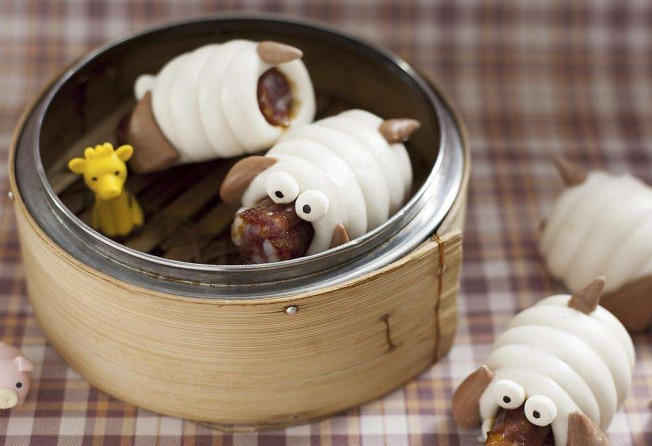
WATCH Bernice Chan learn how to make dim sum
Fong Li-hing holds a cleaver parallel to the kitchen counter and pushes the blade down on a tiny ball of dough, turning it into a round, almost paper-thin wrapper for har gau, or shrimp dumplings.
He adds the prawn and bamboo shoot filling, folds over the wrapper to form a half circle and, within seconds, deftly pleats the sides together to seal it and give the morsel its characteristic shape.“You need to wrap it nicely because the appearance of the dim sum has to look good and taste good,” says Fong, 40, a dim sum chef at the Spring Moon restaurant in The Peninsula Hong Kong. “That’s why you need to practise wrapping a lot.”
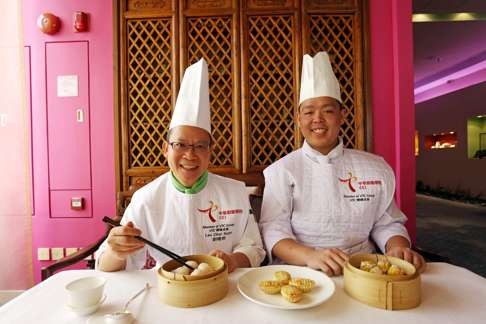
Eating dim sum is a weekly, if not daily, ritual for many Hongkongers, who may have them for breakfast, lunch and, sometimes, even with dinner. But the number of trained cooks preparing the small bites that “touch the heart” has dropped significantly in the last 20 years.
When Fong’s supervisor, dim sum sous chef Lee Po-kin, began his apprenticeship years ago, there were over 30 dim sum chefs in the kitchen.
“We started work at 3am and didn’t finish until 6pm or 7pm. My father suggested I join him because I wasn’t the academic type,” Lee, 57,says with a sheepish smile.
Long hours in the kitchens meant they hardly saw daylight but cooks received free dormitory accommodation and meals at the time.
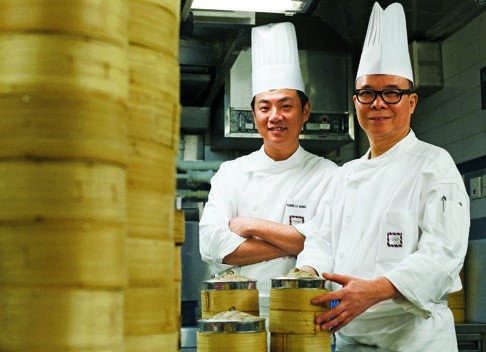
Lee went on to work in restaurants from Wan Chai to Aberdeen, and Tsuen Wan to Mong Kok, most of which don’t exist any more. In the 1990s he began to notice there were fewer dim sum chefs working in restaurants.
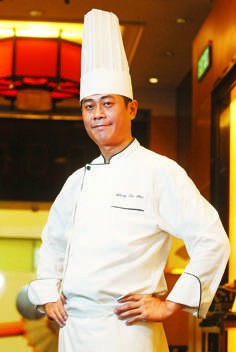
“Particularly during the [1997] Asian financial crisis, there weren’t as many people making dim sum,” he recalls. “Nowadays there are about a dozen in the kitchen, and here [in Spring Moon], we have seven full time staff and a student intern.”
Across the harbour at the Hong Kong Convention and Exhibition Centre, Wong Tai-nin, head chef of the dim sum kitchen, also finds fewer apprentices interested in picking up the painstaking skills needed to make dim sum.
“Not as many are willing to do extra work. We’ve had young people come in and then leave after only a few months. Some jump around to different restaurants and then give up entirely.”
Wong is just 43 but he is a seasoned pro, having worked in restaurants since he was 15, initially just carrying trays of dim sum from table to table. He served an apprenticeship in the kitchen soon afterwards and found he preferred making dim sum to wielding a wok.
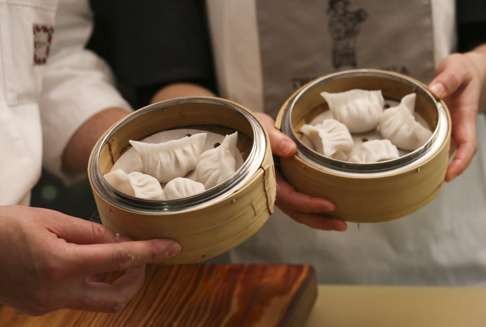
Wong was keen to learn and not afraid to ask the masters to demonstrate the finer points of dim sum making before honing the skills on his own.
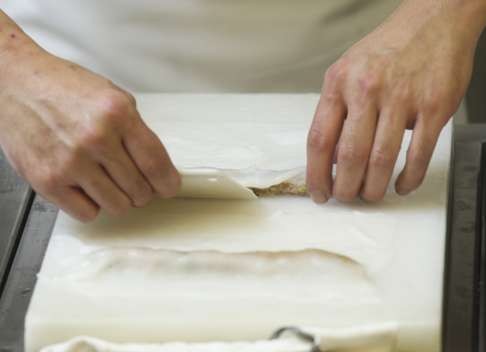
“Back then many older chefs would not tell you how to make it – you had to take the initiative. But these days, young people are not that keen on dim sum. We have to stand all day and it’s messy work.”
At the Golden Bauhinia Cantonese Restaurant, Wong focuses on making classic dim sum items now less commonly found in restaurants, such as his signature goon tong gau, a soup-filled dumpling. Next month the restaurant will feature other classic dim sum dishes like black sesame rolls and preserved vegetables with pork tripe in pepper.
But with fewer people entering the field, Wong says it’s harder to find experienced staff who are skilled at making traditional dim sum. “I hope those in their 30s now will work hard. We will teach them everything they need to know because they are helping us older ones.”
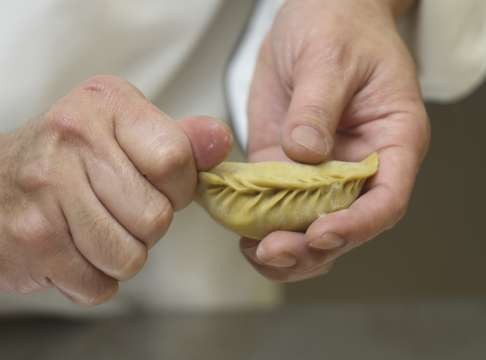
Wong regularly eats at other dim sum places to check on the competition.
“You can’t cheat on taste. I tell my staff they have to keep the standards. That’s the goal. I don’t know how the next generation will do, if they will improve or not, but in the long-term we may have fewer traditional dim sum to eat.”
However, Lau Chor-kwan, an instructor at the Chinese Culinary Institute in Pok Fu Lam, takes a more optimistic view of the availability of skilled cooks.
The vocational school runs a two-year programme that trains aspiring chefs on various aspects of Chinese cooking, including dim sum, roast meats, noodles and desserts. About 1,000 people graduate each year.
A dim sum specialist with 40 years’ experience, the past decade as an instructor, Lau has seen the local restaurant scene go through many ups and downs.
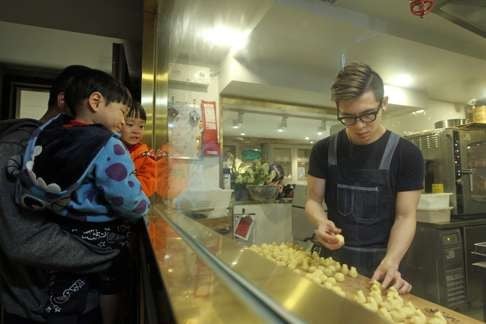
Hong Kong’s booming economy in the ’80s and early ’90s meant there were other jobs available that were less labour intensive and offered higher salaries; kitchen work, naturally, was less desirable.
“Fewer people were interested in making dim sum because you had to work fast and focus wholeheartedly when making them.”
Rent hikes in the mid-’80s also led to the closure of a number of big restaurants that seated up to 200 people, which meant there were fewer chefs making dim sum.
“But in the past four or five years, people are more interested in making dim sum because they see [the success of ] Tim Ho Wan. It has received a Michelin star and has expanded overseas, so they see there is money to be made.”
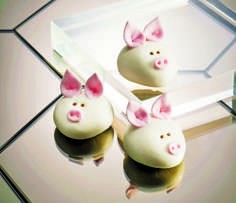
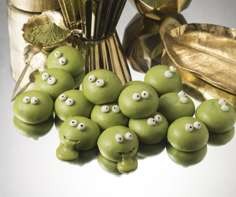

Some newfangled restaurants now present dim sum in unusual ways, but old-school chef Lau reckons there’s room for modern and traditional dim sum.
And with more dim sum restaurants opening, that can only mean good prospects for young people entering the industry now, Lau says, as only about 10 per cent of graduates from the culinary institute specialise in dim sum.
“Every two months or so I get calls from dim sum chefs asking if there are any students they can hire,” Lau says.
In fact, demand for dim sum cooks is so great that entry-level salaries have increased from HK$10,000 two years ago to the current average of HK$14,000.
One potential hire is James Kan Ho-tin, 19, who has been training at the culinary institute for six months.
“It was hard to make dim sum at first because you have to make the wrapper from scratch, make sure it doesn’t fall apart and it has to look nice. You really have to focus to make the dumplings.”
The path of institute alumnus Winson Yip Chun-man, 32, suggests the career that a driven young dim sum chef might make.
His first full-time job after graduation was at the newly opened Disneyland Hong Kong, which exposed him to making dim sum resembling cartoon characters. He went on to work in restaurants at the Regal Riverside Hotel and the Hyatt Regency Hong Kong, that served traditional dim sum, before getting creative at Social Place in Central, where he made truffle shiitake buns that looked like Chinese mushrooms.
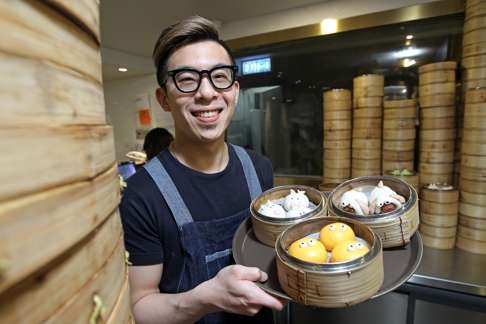
Now head chef at Yum Cha HK, a dim sum restaurant group that opened last November, Yip is responsible for an imaginative menu that includes items such as steamed rice rolls with prawns decorated with pearls of sesame oil. The most photographed items and those that feature heavily in social media, however, are the egg custard buns with a pair of eyes, or barbecue pork buns shaped like rotund piglets.
“The fillings remain traditional because the taste most important – customers can discern the freshness,” Yip says. “If you make it yourself it makes a big difference. It is tedious because there are so many components to dim sum – making the wrapper and the filling, wrapping them and finally steaming.”
His prep work still begins at 3am to ensure that dishes are ready for breakfast customers, but Yip says this is a good time to work in dim sum because there are many opportunities.
And any young person showing promise is likely to be promoted quickly, he adds.
“The older [dim sum chefs] want the younger ones to move up so it’s less hard on them. As long as you’re hard-working you can do it.”
#SoHongKong – for more stories about what makes Hong Kong unique, search for this hashtag.